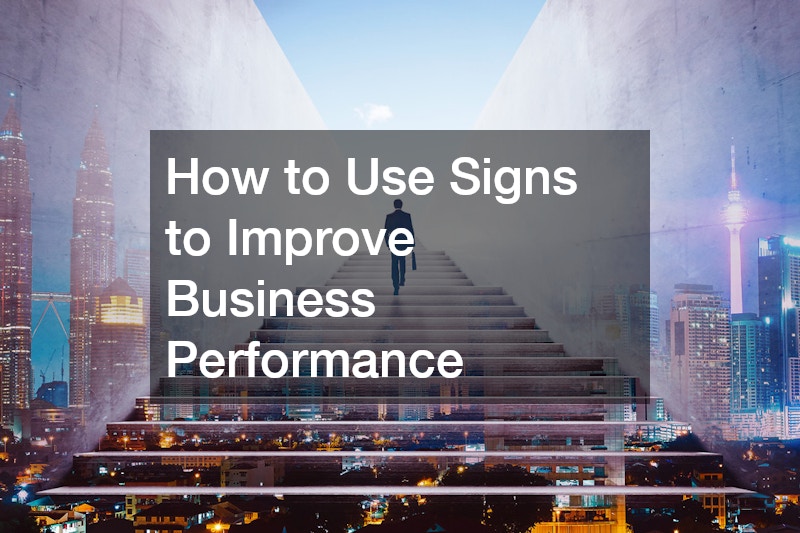Signs are one of the most overlooked yet powerful tools for boosting business performance. Whether you’re a café in a busy suburb or a retail store in a shopping centre, the way you use signage can directly impact your customer foot traffic, brand recognition and overall revenue.
Despite the rise of digital marketing, physical signs remain essential for attracting attention, communicating your brand and guiding people through your space. Businesses that invest in effective signage strategies often enjoy stronger visibility, better customer engagement and more consistent conversions.
Understanding the Role of Signage in Business
When people think about signs, they often picture something static, like a name above a storefront or a menu board behind a counter. In reality, signage serves multiple roles beyond identification. It can persuade, inform and even influence behaviour.
Good signage should reflect your brand tone, make essential information accessible and create a sense of trust and professionalism. Think of a well-designed sign as a silent salesperson—it should encourage action, spark interest or answer a question without needing staff to step in.
Retailers use signs to promote sales or highlight seasonal deals, while service providers might focus on opening hours, certifications or contact information. For hospitality venues, effective menu signs, window decals or A-frames can turn a casual browser into a paying customer.
Choosing the Right Type of Sign for Your Business
The most effective signs are those matched to the purpose, location and customer mindset. For instance, an eye-catching outdoor sign placed at street level will help pull in passing traffic. Inside your business, directional signs improve customer experience by making the space easier to navigate.
Digital signage is becoming more popular for businesses wanting flexibility. With screens, you can update promotions in real-time, rotate through multiple messages or even include video content. This dynamic format works well in high-traffic environments where attention spans are short and competition is fierce.
For smaller spaces or budget-conscious setups, traditional print signage can still offer excellent results. High-quality banners, posters or window graphics can be tailored to suit your layout and style. Just make sure the design is clear, uncluttered and consistent with your branding.
Design Tips That Boost Performance
Effective signage isn’t just about what you say, but how you say it. Fonts, colours and layout all contribute to readability and visual impact. Your sign should be easy to read from a distance, with clear hierarchy in the text so viewers know where to look first.
Avoid cramming in too much information. Stick to one main message per sign and use short, strong wording. A headline like “Half-Price Lunch Specials Today” tells more in less space than a full sentence. Use branding elements like your logo and colour palette, but don’t let them overpower the message.
Contrast is another key element. Dark text on a light background (or vice versa) improves visibility. If your sign will be seen in low-light conditions, consider illuminated signage or using reflective materials.
Placement Matters More Than You Think
Where you place your signs has just as much impact as what they say. Outdoor signage should be positioned at eye level or slightly above, angled to face oncoming foot or vehicle traffic. Test your placement from various distances and approach angles to make sure it stands out in the environment.
Indoors, signs should be placed where customers naturally pause or make decisions—at entrances, near checkouts or beside product displays. Avoid cluttering every wall with signs, as this can lead to visual fatigue and reduce their effectiveness.
Temporary signs for promotions or events should be bold and timely, but not so overwhelming that they distract from your main branding. Use them sparingly and rotate them out regularly to keep your space fresh and engaging.
Measuring the Impact of Signage
Once your signs are up, it’s worth tracking their effect. Have you noticed an increase in walk-ins since you updated your shopfront? Are more customers asking about a featured service? These small clues can signal that your signage is doing its job.
If you want a more direct metric, try A/B testing different versions of a sign with rotating weekly offers or QR codes. You can even run a customer survey asking how they found you or what caught their eye when they visited. This kind of feedback is valuable for refining your signage strategy going forward.
You can also evaluate impact using tools like foot traffic counters, point-of-sale data or Google My Business insights for location-based search traffic. Over time, a strong signage strategy should help align your customer flow with business goals.
Signs are a quiet but critical part of business success. When designed well, placed strategically and matched to your brand identity, they help guide, inform and convert customers in ways that few other tools can.
No matter the size or type of your business, taking the time to review and refresh your signage can offer a measurable return. So next time you’re thinking about growth or visibility, don’t underestimate the power of a good sign.




